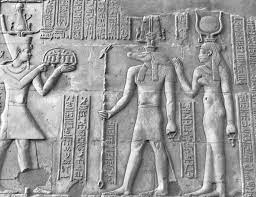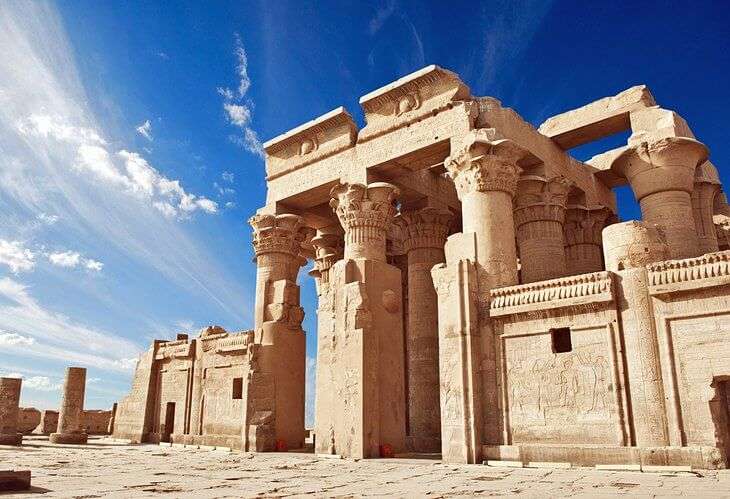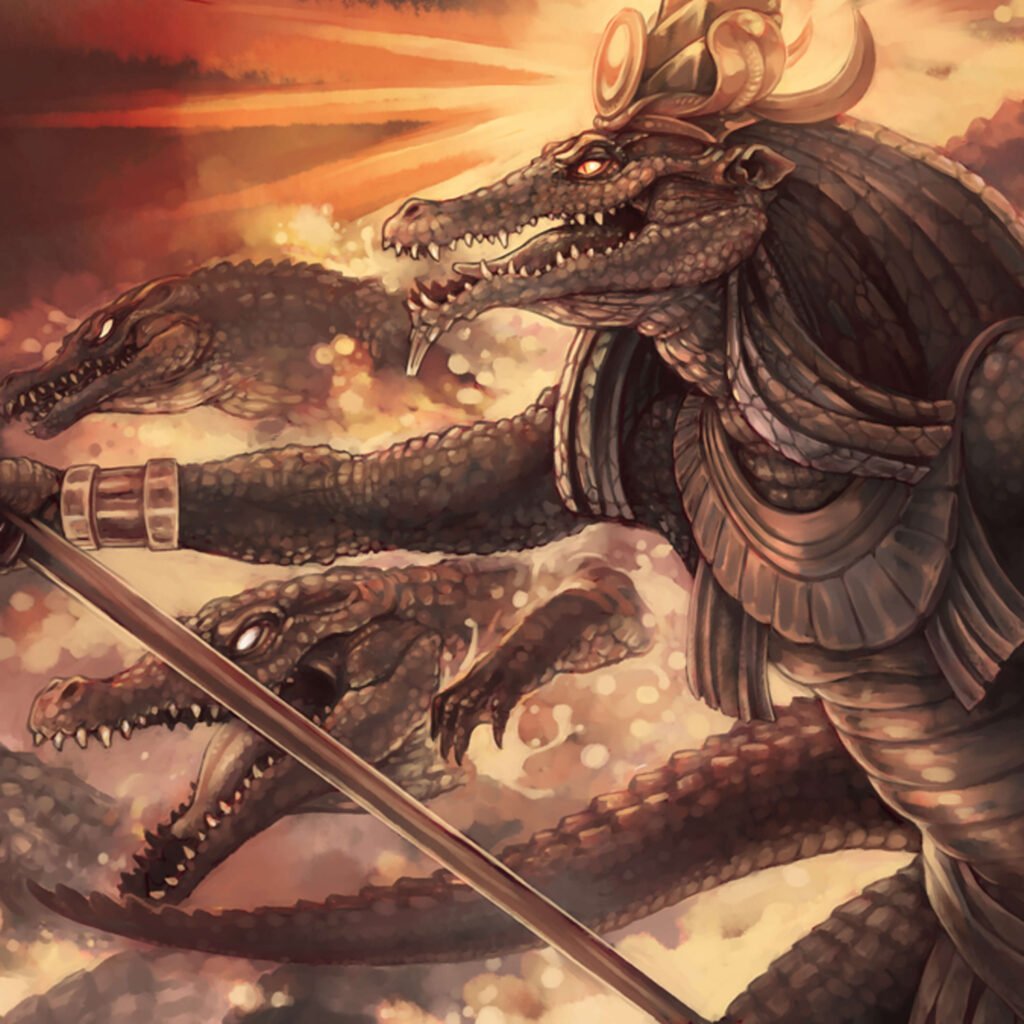1. Introduction:
As the sun sets, casting shadows over ancient Egypt’s temples, the crocodile god Sobek’s powerful presence is palpable. Artists carve his fierce, half-human, half-crocodile form into stone reliefs, a deity embodying the Nile’s dual nature – nurturing yet fearsome. Sobek reigns over fertility and military might, a symbol of the pharaohs’ invincibility. His image, rich with intricate glyphs and inscriptions, illustrates ancient Egypt’s deep connection with the Nile. Each element of art weaves a narrative of awe and reverence, echoing amidst the silent, majestic pyramids and sphinxes. In this bygone splendor, Sobek’s enigmatic aura looms, immortal and potent.
| Origin | Egyptian Mythology |
|---|---|
| Classification | Gods |
| Family Members | Set (sometimes associated as a father), Neith (sometimes associated as a mother) |
| Region | Egypt, particularly the Nile River |
| Associated with | Crocodiles, Fertility, Military Prowess, Protection |
2: Historical Context
Unraveling the Myths: Sobek’s Ancient Narratives
The air is thick with mystery as one delves into the ancient scripts, unraveling the enigmatic tales of Sobek, woven meticulously through the epochs of Egyptian civilization. Every glyph and inscription on the austere walls of temples and tombs carries echoes of fascinating stories, painting a vivid tableau of a world where gods and men walked hand in hand. Sobek emerges, not just as a deity but as an integral fragment of the cultural and spiritual ethos that has shaped Egypt.
Sobek’s Divine Tapestry
In the dimly lit corridors of temples nestled by the Nile, stories of Sobek’s divine interventions are etched in stone. From the Palermo Stone to the walls of the Temple of Kom Ombo, original texts and artifacts herald Sobek as a complex deity of contrasting personas. A protector and punisher, his dual nature is captured in intricate hieroglyphs, each narrating a tale of awe and reverence.
He was believed to possess an unrivaled power, with each narrative accentuating his role in creation, fertility, and military might. One popular myth reveals Sobek as the guardian of the Nile’s sacred waters, where he emerges each dawn, his scales glistening under the golden sun, ensuring the river’s ebb and flow that was crucial for the civilization’s sustenance.

A God Revered
Ancient Egyptians held Sobek in awe, weaving intricate ceremonies and rituals to appease and honor him. Temples adorned with elaborate artistry stood as testaments to his revered status.
The crocodile god exerted a pervasive influence, transcending the realm of myth to become a living entity. His ethereal presence deeply embedded itself in the daily lives and afterlife beliefs of the ancient Egyptians. Each historical piece, every ancient text, unravels a facet of Sobek’s enigma, offering a glimpse into a civilization where the crocodile god reigned supreme, embodying the mystique of the Nile, and shaping the cultural and spiritual identity of ancient Egypt.
3: Sobek’s Characteristics
A Visage Carved in Stone: Sobek’s Iconic Form
In the still, silent sanctuaries of temples, amidst the whispers of reeds swaying by the Nile, one encounters the arresting gaze of Sobek. His form is a harmonious amalgamation of the human and the divine, a testament to ancient Egypt’s artistic and spiritual acumen. Sobek’s half-human, half-crocodile imagery isn’t just a portrayal but a narrative, each detail meticulously crafted to reveal the deity’s potent attributes.

Sobek’s Ethereal Traits: Beyond the Physical Realm
With the body of a robust man adorned in lavish regalia, Sobek’s human form exudes strength and authority. Yet, it’s the crocodile head, with eyes that gleam with an ancient wisdom, which unveils a deeper narrative. This union encapsulates Sobek’s dominion over the earth and water, signifying a deity capable of benevolence and wrath, of creation and destruction.
His scaled skin, reminiscent of the enduring Nile, narrates tales of fertility and abundance. The crocodile’s formidable jaws, a symbol of military prowess, portray Sobek as a guardian deity, a protector of the Pharaohs, and a force of retribution against the enemies of Egypt.
The Metaphysical Enigma
Each aspect of Sobek’s portrayal, from his adornments to his stance, is imbued with symbolic meanings. He is often depicted with an ankh, the ancient Egyptian symbol of life, signifying his role as a life-giver and his connection to the world’s natural cycles.
Yet, the paradox of Sobek lies in his intricate balance of opposing forces. His fierce visage underscores a god of wrath and retribution, yet, in the same breath, ancient texts reverberate with tales of Sobek’s benevolence, of his role in healing and protection.
This intricate tapestry of characteristics reveals Sobek not merely as a god to be revered or feared but as an intricate embodiment of the dualities that define existence, nature, and the cosmos. Each characteristic, meticulously depicted in ancient art and texts, unveils a deity whose presence permeated every aspect of the ancients’ lives, from the corporeal to the ethereal, weaving an enigmatic narrative that continues to captivate the modern world.
4: Influence and Worship
A Dance of Devotion
Beneath the gaze of a thousand stars illuminating the indigo Egyptian skies, the air pulsates with the rhythmic chants of priests, their voices weaving through the sacred halls of temples dedicated to Sobek. Every stone, every altar, is a silent witness to the awe-inspiring rituals that unfold with the rising and setting of the sun, an eternal dance of devotion echoing through the annals of time.
Temples of Majesty
In the heart of the city of Crocodilopolis (modern-day Faiyum), the grandeur of Sobek’s main temple stands as a testament to the crocodile god’s formidable presence. This architectural marvel, adorned with intricate carvings and inscriptions, unveils compelling stories of ancient rituals and ceremonies held in Sobek’s honor. Each stone, every glyph, resonates with the energy of a civilization deeply rooted in the mystique of its deities.
The temples were not mere structures but living entities where the divine and the mortal realms converged. The Kom Ombo temples, adorned with grandeur, housed sacred crocodiles and served as the epicenter for elaborate ceremonies.

Sobek’s Cultural Imprint
Sobek’s influence transcended the mystical and permeated every facet of ancient Egyptian society. He was not merely a god to be worshipped but a deity intricately woven into the fabric of daily life, law, and governance. The Pharaohs, seen as the earthly embodiment of gods, often invoked Sobek’s name and sought his divine intervention in matters of state, warfare, and justice.
Every ritual, each invocation, underscored Sobek’s dual nature. He was the god of fertility, ensuring the Nile’s annual flooding that brought life to Egypt’s arid landscapes. Yet, he was also the warrior god, the embodiment of royal might and authority.
An Epoch of Divine Interplay
As we journey through the echelons of various dynasties, Sobek’s transformation and integration into the complex pantheon of Egyptian deities is evident. From the Old Kingdom’s silent reverence to the New Kingdom’s grandiose celebrations, Sobek morphed from a regional deity to a national icon, his narrative intertwined with other powerful gods like Ra, echoing the civilization’s evolving spiritual, political, and cultural landscape.
5: Sobek’s Role in Modern Culture
A Resurgence: Sobek in the Contemporary Narrative
In the complex, ever-evolving tapestry of modern culture, the enigmatic aura of Sobek resurfaces, casting its formidable shadow across literature, cinema, and art. The crocodile god, with his compelling duality and iconic imagery, steps beyond the boundaries of ancient temples and pyramids into the pulsating heart of today’s storytelling.
Literature’s Homage to the Ancient Deity
Novels, poems, and literary pieces teem with the vibrant echoes of Sobek’s ancient narratives. Writers weave intricate tales where the crocodile god, with his fearsome visage and mystical aura, leaps from the hieroglyph-laden walls of ancient Egypt into the pages of books. Each story, every portrayal, is a testament to Sobek’s enduring legacy – a god immortalized not just in stone but in the collective consciousness of generations.
The Crocodile God in Cinema
The silver screen, with its visual storytelling allure, is yet another canvas where Sobek’s enigmatic tales are brought to life. Filmmakers, inspired by the richness of Egyptian mythology, cast Sobek in roles that oscillate between the mystical and the tangible. The god’s symbolic traits – his strength, authority, and duality – become thematic elements that shape plots and characters, drawing audiences into a world where mythology and reality converge.

Analyzing the Evolution: Sobek’s Modern Avatar
The transition of Sobek from the sacred scrolls and temple walls of ancient Egypt to the dynamic platforms of modern media is more than a cultural adaptation. The universal appeal and intrinsic complexity of Sobek signify a deity whose narratives root in fundamental human experiences and cosmic interplays.
In analyzing Sobek’s modern portrayals, one encounters the deity’s evolving image. Sobek no longer remains confined to his ancient roles but adapts and morphs, reflecting the contemporary interpretations of power, authority, and the enigmatic dance between creation and destruction actively.
6. Conclusion
In the intricate dance of time, where epochs meld and narratives intertwine, Sobek, the revered crocodile god of ancient Egypt, stands as a sentinel of a rich, enigmatic history. From the mystical corridors of grand temples, adorned with intricate inscriptions, to the resonant pages of modern literature and the dynamic frames of contemporary cinema, Sobek’s enigmatic presence pulsates with life. His dual nature, embodying creation and destruction, life and death, mirrors the eternal dance of the cosmos. Sobek is not merely a deity etched in stone or narrated in ancient scrolls; he is a living entity, an enduring legacy echoing the richness of Egyptian mythology. In every portrayal, every narrative, ancient and modern, Sobek emerges – a testament to a civilization’s spiritual depth, cultural richness, and the universal human quest to decipher the enigmatic dance of the divine in the mortal realm.
